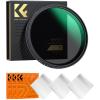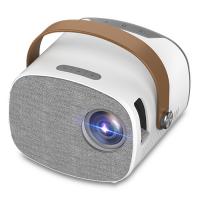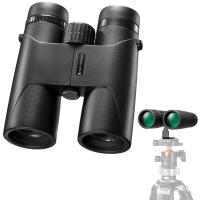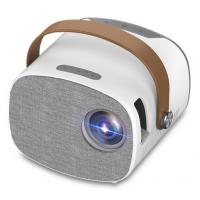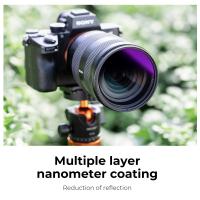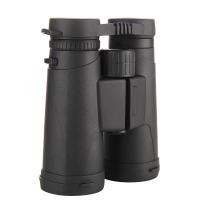How To Use Projector?
Using a projector can significantly enhance presentations, movie nights, and even gaming experiences. However, for many, the process of setting up and using a projector can seem daunting. This article aims to demystify the process, providing a step-by-step guide to ensure you can use your projector effectively and efficiently.
Understanding Your Projector
Before diving into the setup, it’s essential to understand the different types of projectors available and their specific features. Projectors can be broadly categorized into three types:
1. LCD Projectors: These use liquid crystal displays to project images. They are known for their bright and vibrant colors.
2. DLP Projectors: Digital Light Processing projectors use a chip with tiny mirrors to reflect light. They are compact and offer high contrast ratios.
3. LED Projectors: These use light-emitting diodes as their light source. They are energy-efficient and have a longer lifespan.
Step-by-Step Guide to Using a Projector
1. Unboxing and Initial Setup
- Unbox the Projector: Carefully remove the projector from its packaging. Ensure you have all the necessary components, including the remote control, power cable, and any other accessories.
- Read the Manual: Before proceeding, read the user manual. It contains specific instructions and safety information pertinent to your model.
2. Choosing the Right Location
- Screen Placement: Decide where you want to project the image. This could be a blank wall or a dedicated projector screen. Ensure the surface is smooth and white for the best image quality.
- Projector Placement: Place the projector on a stable surface. The distance between the projector and the screen will depend on the throw ratio of your projector. Refer to the manual for the optimal distance.
3. Connecting the Projector
- Power Connection: Plug the power cable into the projector and then into a power outlet. Turn on the projector using the power button.
- Source Connection: Connect your source device (laptop, DVD player, gaming console) to the projector. Most projectors have multiple input options, including HDMI, VGA, and USB. Choose the appropriate cable and connect it to both the projector and the source device.
4. Adjusting the Image
- Focus: Use the focus ring or lever on the projector to sharpen the image. This is usually located around the lens.
- Keystone Correction: If the image appears trapezoidal, use the keystone correction feature to adjust it. This can be done manually or automatically, depending on your projector model.
- Zoom: Adjust the zoom to fit the image to your screen size. This can be done using the zoom ring or through the projector’s menu settings.
5. Setting Up the Audio
- Built-in Speakers: Some projectors come with built-in speakers. While convenient, they may not provide the best sound quality.
- External Speakers: For a better audio experience, connect external speakers to the projector. This can be done using the audio output port, usually a 3.5mm jack or an optical audio port.
6. Fine-Tuning the Settings
- Brightness and Contrast: Adjust the brightness and contrast settings to suit your environment. A darker room will require lower brightness settings.
- Color Settings: Most projectors allow you to adjust the color settings. Experiment with these to get the best picture quality.
- Aspect Ratio: Set the aspect ratio to match your source content. Common options include 4:3, 16:9, and 16:10.
Troubleshooting Common Issues
Even with the best setup, you might encounter some issues. Here are common problems and their solutions:
- No Signal: Ensure all cables are securely connected. Check that the source device is turned on and set to the correct output mode.
- Blurry Image: Adjust the focus and ensure the projector is at the correct distance from the screen.
- Overheating: Ensure the projector has adequate ventilation. Clean the air filters regularly to prevent dust buildup.
- Remote Not Working: Check the batteries in the remote. Ensure there are no obstructions between the remote and the projector’s sensor.
Maintenance Tips
To prolong the life of your projector and maintain optimal performance, follow these maintenance tips:
- Regular Cleaning: Dust the projector regularly. Clean the lens with a soft, dry cloth. Avoid using harsh chemicals.
- Lamp Replacement: Projector lamps have a limited lifespan. Monitor the lamp hours and replace the lamp when necessary. Refer to the manual for instructions on how to replace the lamp.
- Firmware Updates: Check the manufacturer’s website for firmware updates. Updating the firmware can improve performance and fix bugs.
Enhancing Your Projector Experience
To get the most out of your projector, consider the following enhancements:
- Projector Screen: While a blank wall can suffice, a dedicated projector screen will provide better image quality. Screens are designed to reflect light more effectively, resulting in a clearer and brighter image.
- Mounting Options: Ceiling mounts can save space and provide a more permanent setup. Ensure the mount is compatible with your projector model.
- Wireless Connectivity: Some projectors offer wireless connectivity options, allowing you to stream content from your devices without the need for cables. This can be particularly useful for presentations.
Using a projector can transform your viewing experience, whether for business presentations, home theater setups, or gaming. By following the steps outlined in this guide, you can ensure a smooth setup and optimal performance. Remember to regularly maintain your projector to prolong its lifespan and keep it running efficiently. With the right setup and a bit of practice, you’ll be able to enjoy all the benefits a projector has to offer.


